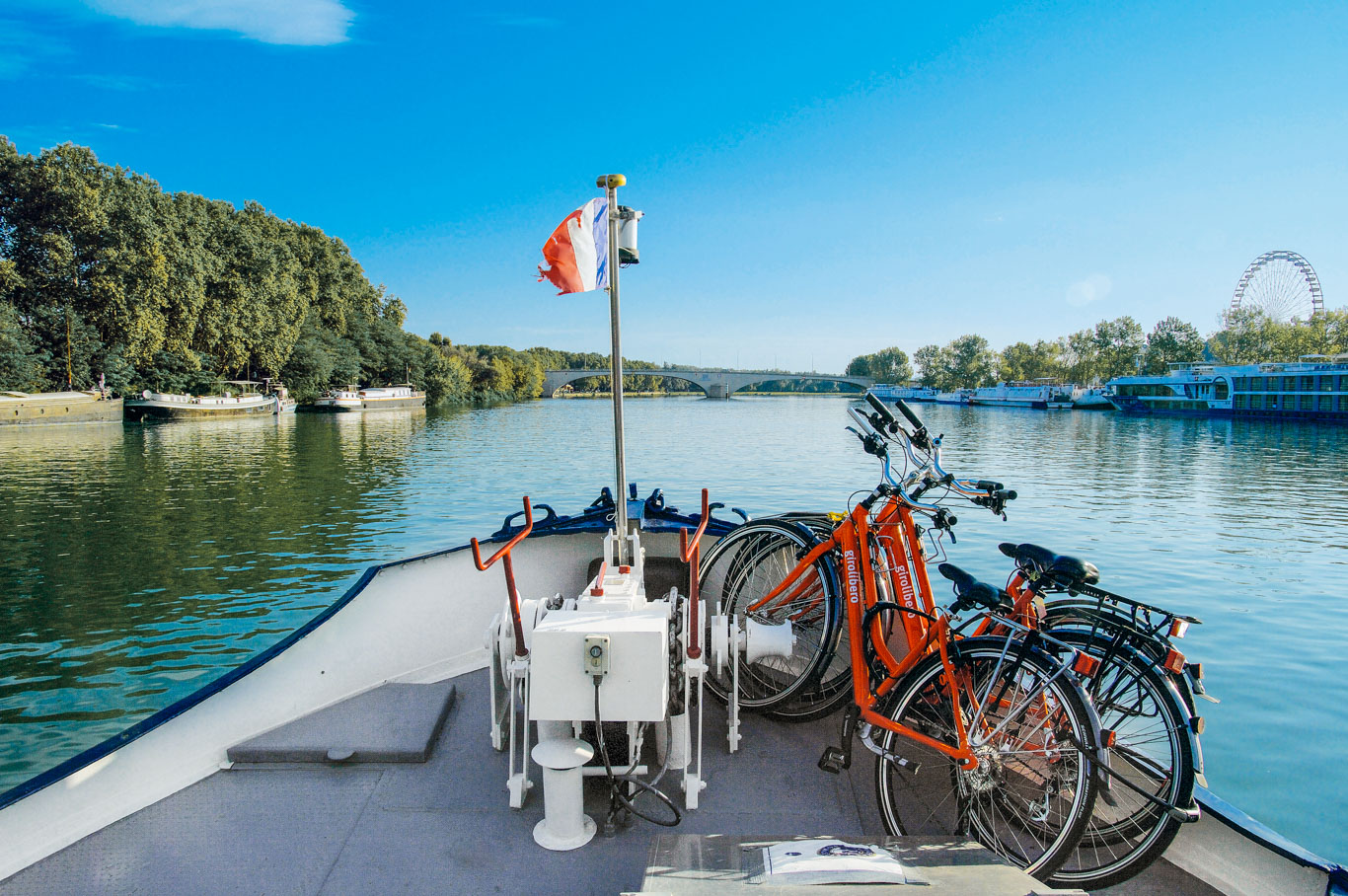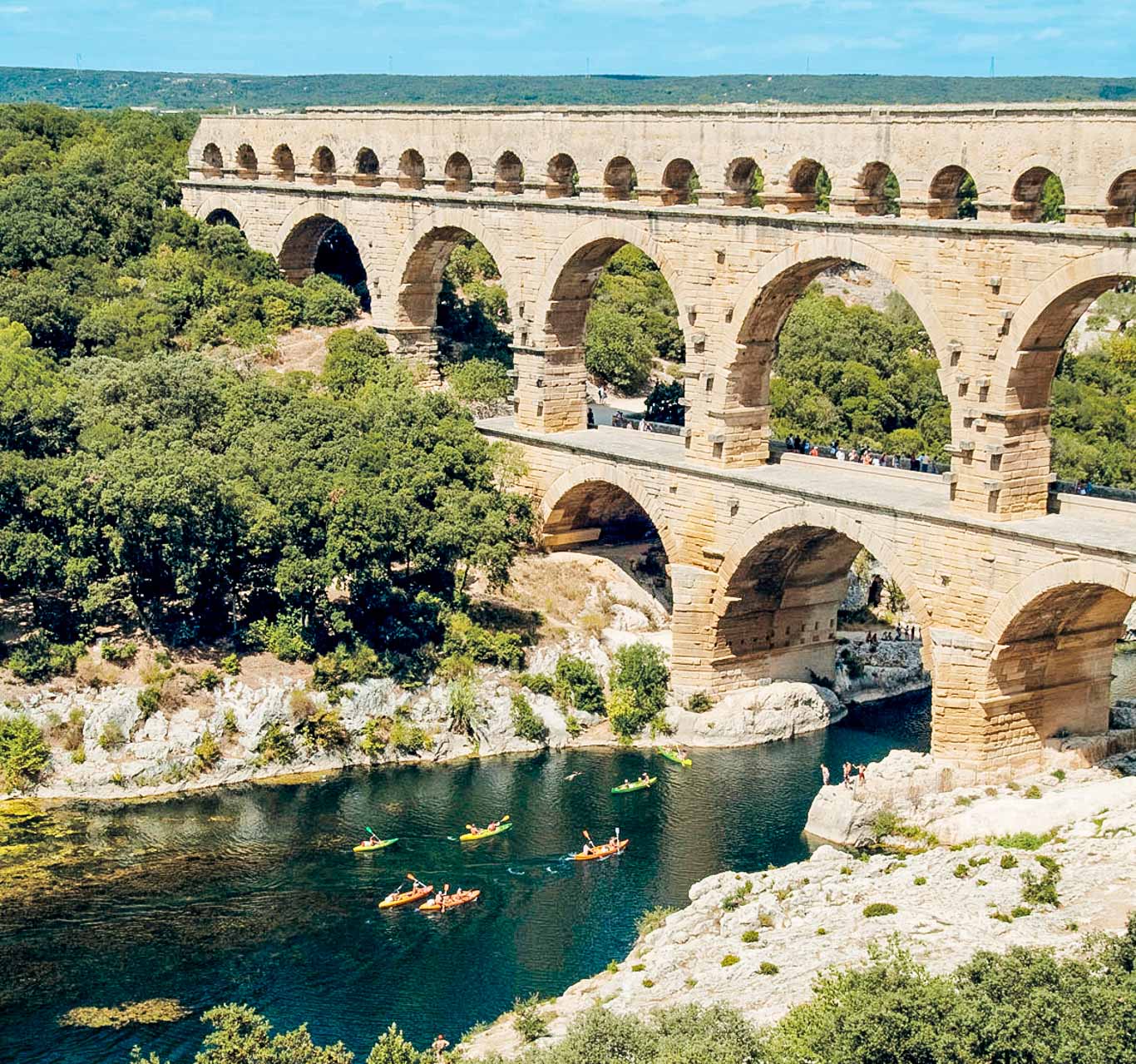
/ Rino Gomiero / to cycle bike and boat bikes and accessories travel by bike
A bike and barge tour in Provence

This article is from the magazine “Routes and Places.”
A land where art, culture, tradition and nature live in harmony. A journey among landscapes that have inspired painters, Roman ruins and medieval villages to be savored at a slow pace, thanks to two wheels and a boat along the Rhone.
What to see in Provence
To taste the best of Provence, you would have to live there for at least a year. Every season, every month and every week offers something special and evocative, as Peter Mayle tells with delightful English humor in his book A Year in Provence. Our trip to the South of France touches only part of the fragrant Provence, beginning in Avignon, briefly the city of the Popes, and ending in the wild Camargue. A short time compared to what the history, traditions and nature would require, but enough to get to know some of the highlights of the area; largely man-made, Provence lends itself to a slow bike ride.
We are traveling under the label of slow travel, while at the same time maintaining the ability to move in times appropriate for visiting wide spaces. Ariadne’s thread of our journey is the Rhone, the great river that rises from the Swiss mountains and flows into the Mediterranean after a long “wandering” through France. We will follow its course by bike and for some stretches by boat, sleeping on board each night. We will follow it from Avignon, residence of the Popes in exile in the 14th century, and then on to remarkable testimonies of the Roman presence, such as the Pont du Gard, the highest Roman aqueduct, with its structure of three rows of arches, and a work of high engineering intended to demonstrate the power of Rome to the people of Nîmes and all the Gallic people (even if it mainly carried water for the fountains of the patrician houses). Ancient Rome that we will also have the chance to appreciate in Arles, visiting the remains of the amphitheater and the magnificent arena. Also in Arles, we will be able to follow in the footsteps of Vincent Van Gogh, who was so in love with Provençal landscapes that between 1888 and 1890 he produced no less than 150 canvases, immortalizing evocative corners, some of which remain unchanged; we will feel like we are in a painting as we walk through the alleys of Saint-Rémy-de-Provence: A place that owes its fame not only to the Flemish painter who painted his most famous masterpieces here (Starry Night and Self-Portrait), but also to the prophecies of Nostradamus, a native of the place. Traces of the Middle Ages also await us along our route, such as the perched fortress of Les Baux-de-Provence and its limestone village, considered one of the most beautiful villages in France, while further south, the walled city of Aigues-Mortes, nestled among the great ponds of the Camargue, was the only port in France from which ships laden with crusaders departed.
What to see in Camargue
Outside the inhabited areas, the Camargue looks like a vast, wild plain. It is dotted with ponds where pink flamingos forage for shellfish. Here, nature reigns supreme. The ponds are exploited by man only for salt production, and the land is used for grazing by half-sheep bulls and horses with their characteristic white coats. There are also flat areas where rice fields and sandy soil vineyards abound. The hinterland is dotted with small villages whose squares are lined with large plane trees, which seem to have been planted there to provide shade for the people playing their favorite pastime: pétanque, the game of bowls played on clay. You can feel the Spanish influence, you can breathe it in the cuisine and in the arenas, even in the smaller towns, where the Feria is practiced, with the running of the bulls through the streets of the city.
But back to the “glue” of our journey, the Rhone. Near Avignon, it splits into two branches forming the island of Barthelasse. The left branch preserves the last 5 arches of what remains of the medieval Pont St. Bénezet, one of the Unesco World Heritage sites in Provence, much of which collapsed after a flood in the 17th century. On the right, the tower of Philippe le Bel, built in the 13th century to control access to the bridge, dominates.
A stone’s throw away is Villeneuve-lèz-Avignon, a lively town with a tranquillity that cannot be compared to the nearby bustling city of Avignon, and perhaps it is no coincidence that in this place of peace the Cistercian monks built a beautiful monastery in the 14th century. It is here, in the shadow of the Le Bel tower, that the boat awaits us that will pamper us for the entire trip. Not far away, other boats moored on the shore bear the marks of those who have been there for a long time. For some, the philosophy of slow travel never ends.
For many visitors to the area, the only unavoidable encounter with avifauna is the flamingo, which has the largest breeding colony in the Mediterranean, with more than 20,000 chicks taking flight from here each year. However, the varied and well-preserved environments of the Rhône estuary, and in particular the area protected by the Camargue Regional Natural Park, offer refuge to three hundred and fifty other species, more or less birds, which alternate at different times of the year. With a little attention, it will not be difficult to notice the others. First of all, the herons, represented here by all the European species, nest there in colonies called garzaie or singly, depending on the species. The gulls observed here are not all the same. There are regularly at least eight species, four of which nest here, including the rare rose gull and coral gull. Terns are also well represented, including the breeding Fraticellus, Plumed Warbler, Becapesci, Piping Tern and Common Tern. Spoonbills and glossy warblers, black-winged stilts and avocets are the most spectacular sightings to be had in the wetlands, but the sandy and arid areas are also likely to hold some surprises, including the extremely rare meadow hen, hail and stone curlew.
Organized tours to Provence and Camargue
Are you looking forward to exploring Provence? Check out the bike and boat trip to Provence and Camargue with Girolibero.
0 Travel tips




